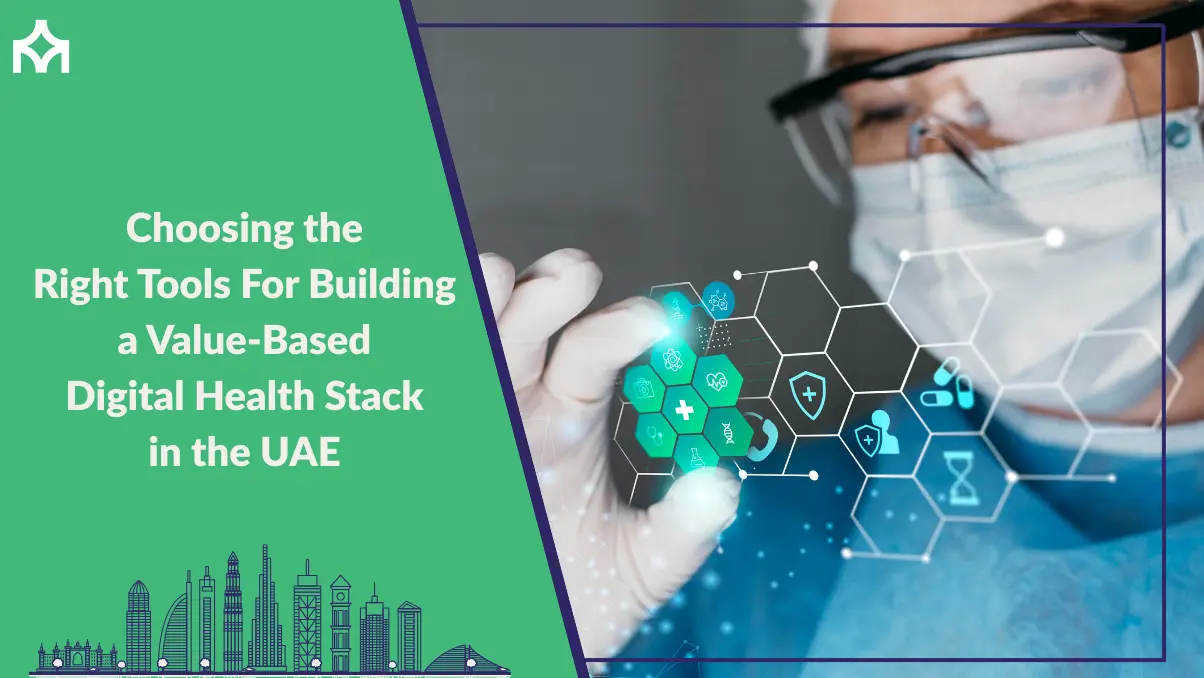As the UAE continues its healthcare transformation journey, digital innovation stands at the center of value creation. However, building a cohesive, value-based digital health stack goes far beyond adopting the latest apps or devices. It requires a strategic selection of tools that work together to support data-driven care, patient engagement, operational efficiency, and measurable outcomes.
In this article, we explore how UAE healthcare organizations can evaluate, prioritize, and implement the right digital technologies to build a future-ready, patient-centered, and value-driven health stack.
What Is a Digital Health Stack?
A digital health stack refers to the suite of technologies, platforms, and tools that together form the digital foundation of a healthcare organization. A robust stack supports care delivery across all touchpoints and stages—from population health management to acute interventions to post-acute recovery.
Key Components Include:
- Electronic Health Records (EHRs)
- Patient engagement tools (portals, messaging apps)
- Telehealth and remote monitoring systems
- Clinical decision support systems (CDSS)
- Data analytics and dashboards
- AI-driven risk stratification and predictive modeling
- Interoperability and data exchange layers
Step 1: Align Tools with Value-Based Objectives
The first step in choosing the right tools is aligning them with strategic priorities:
- Improve outcomes (clinical quality, safety, patient experience)
- Reduce cost (readmissions, unnecessary tests, manual processes)
- Enhance equity and access (digital front doors, translation, mobile access)
Each technology added should support one or more of these goals and be measurable against them.
Step 2: Focus on Integration, Not Isolation
Many organizations fall into the trap of assembling a “Frankenstack”—an incoherent collection of siloed systems. Instead, UAE hospitals must:
- Prioritize open APIs and standards (FHIR, HL7)
- Ensure compatibility with national and regional health information exchanges
- Choose platforms with native integration to EHRs and core operations
Step 3: Prioritize Patient and Clinician Experience
A well-designed digital health stack empowers both the clinician and the patient:
For Clinicians:
- Low-friction documentation
- Real-time decision support
- Minimal context switching across systems
For Patients:
- Mobile-first access to care
- Digital intake and self-scheduling
- Personalized engagement through AI-powered messaging
Step 4: Build Around Data
Data is the fuel of value-based care. Your stack must support:
- Clean, consistent, and structured data capture
- Real-time data visualization for KPIs
- Predictive analytics and machine learning pipelines
Vendors should demonstrate how their tools contribute to longitudinal patient records and care coordination across systems.
Step 5: Ensure Scalability and Future-Readiness
Choose tools that can evolve with the system’s growth:
- Cloud-native platforms that auto-scale and update
- Modular architecture for easy upgrades and replacements
- Support for AI, NLP, and edge computing integrations
UAE-Specific Considerations
- Multilingual and culturally sensitive UX design
- Compliance with UAE health data regulations and national strategies (e.g., Malaffi, Riayati)
- Cross-border interoperability for medical tourism and international care partnerships
Conclusion
The UAE is uniquely positioned to lead in digital health innovation. But the effectiveness of a digital transformation depends on thoughtful stack design—one that blends technological excellence with cultural, regulatory, and clinical alignment.
By choosing tools that prioritize value, integrate seamlessly, empower users, and scale intelligently, healthcare leaders can build a digital foundation that truly transforms health outcomes for years to come.

